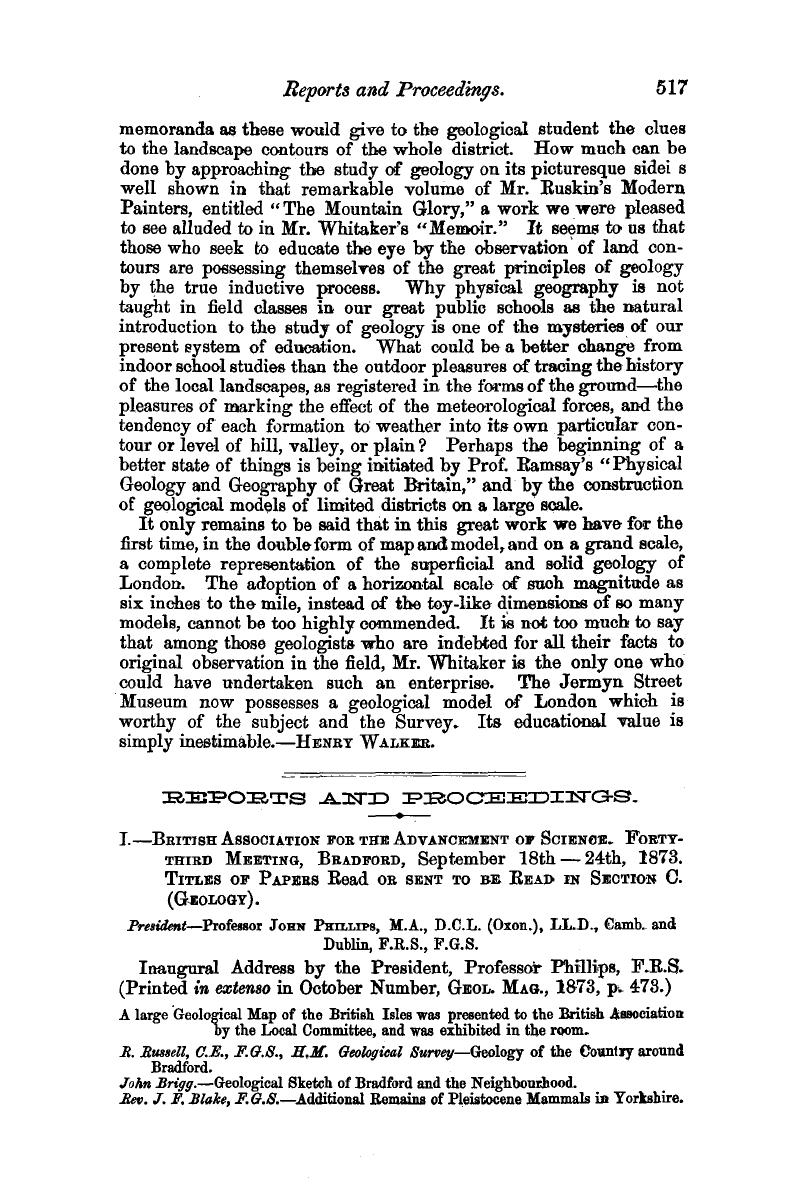No CrossRef data available.
Article contents
Reports and Proceedings
Published online by Cambridge University Press: 01 May 2009
Abstract

- Type
- Reports and Proceedings
- Information
- Copyright
- Copyright © Cambridge University Press 1873
References
page 519 note 1 See Geol., Mag., Vol. IX., p. 467, and Trans. Liverpool GeoL Soc., session 1872–3.
page 521 note 1 Trans. Lin. Soc., 1873, vol. xxviii. pt. iii. p. 459, plates xxxvi. to xxxix.
page 521 note 2 Ann. des Sc. Nat. Zoologie et Paleontologie, 1872–3, 5th series, tome xvii. p. 25, plates v. to xvi.
page 521 note 3 From κεφαλ, the head, and ***τρον, a part of the abdomen, in allusion to the fact that (as in other Crustacea) “a part of such cavity is associated with the ‘head’ in the first division of the King-crab's body, and with the ‘thorax’ in the second division.”—(Owen, op. cit. p. 463.)
page 522 note 1 “The Development of Limulus polyphemus,” by A. S. Packard, Jun., M.D. Mem. Boston Soc. Nat. Hist., 1872, vol. xi. pp. 155–202, pl. iii.-v.
page 522 note 2 “Zur Embryologie und Morphologie des Limulus polyphemus, von Dr. Anton Dohrn,” Jenaische Zeitschrift, Bd. vi. Heft 4, p. 580, Taf. xiv. and xv., 1871.
page 522 note 3 From χειλριον, a small lip (Owen, op. cit. p. 464).
page 522 note 4 As pointed out by me, see Fifth Report on Fossil Crustacea, by H. Woodward, British Association Reports, Edinburgh, August, 1871, p. 53, and Geol. Mag., 1871, Vol. VIII. pp. 521–524.
page 523 note 1 See Quart. Journ. Geol. Soc., 1859, vol. xv. p. 237. See also Prof Bell's Mon., part 2, Pal. Soc., 1862; Crustacea of the Gault and Greensand, p. 1, pl. 1, figs. 2 and 3.


